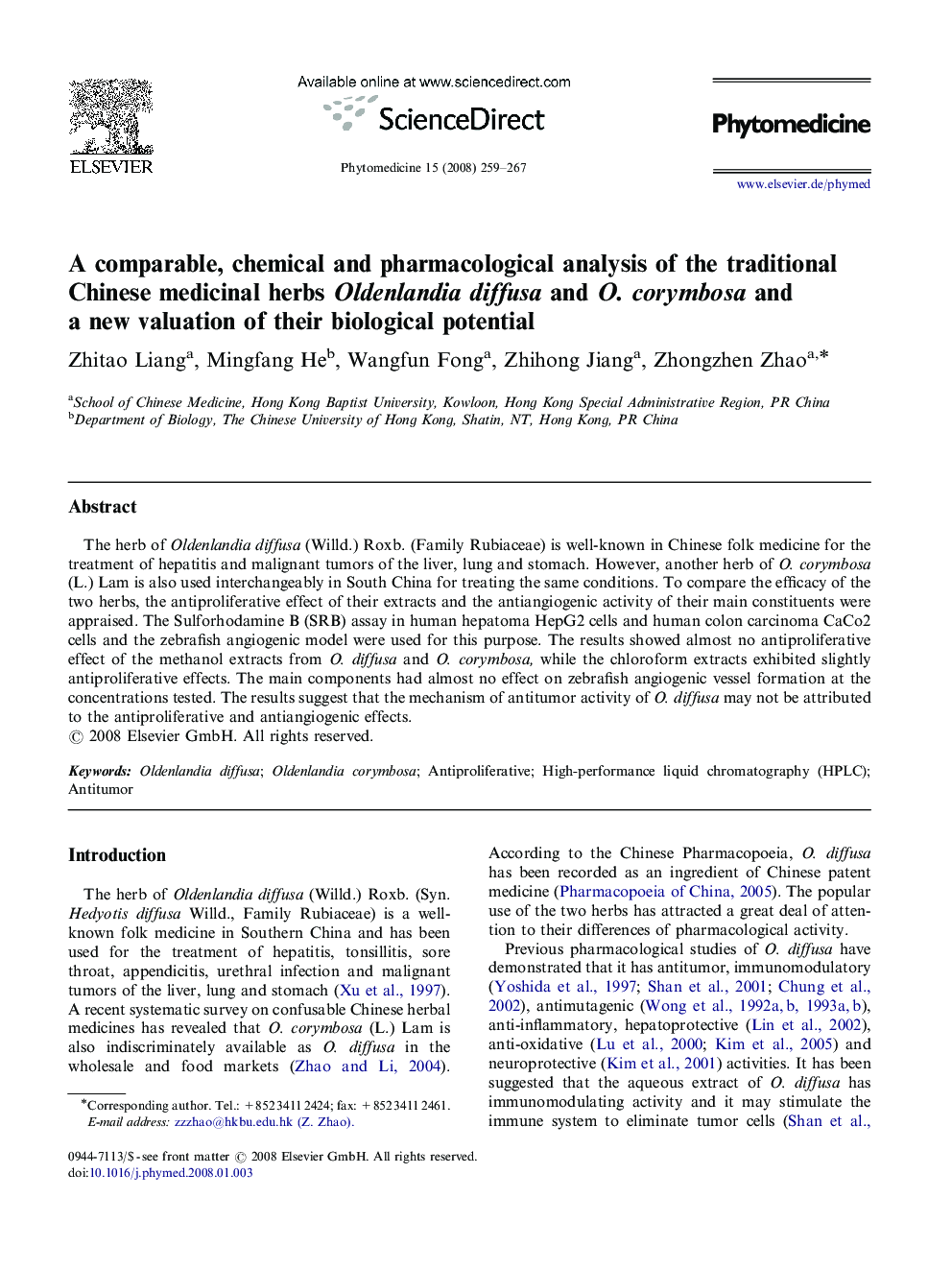| Article ID | Journal | Published Year | Pages | File Type |
|---|---|---|---|---|
| 2497491 | Phytomedicine | 2008 | 9 Pages |
The herb of Oldenlandia diffusa (Willd.) Roxb. (Family Rubiaceae) is well-known in Chinese folk medicine for the treatment of hepatitis and malignant tumors of the liver, lung and stomach. However, another herb of O. corymbosa (L.) Lam is also used interchangeably in South China for treating the same conditions. To compare the efficacy of the two herbs, the antiproliferative effect of their extracts and the antiangiogenic activity of their main constituents were appraised. The Sulforhodamine B (SRB) assay in human hepatoma HepG2 cells and human colon carcinoma CaCo2 cells and the zebrafish angiogenic model were used for this purpose. The results showed almost no antiproliferative effect of the methanol extracts from O. diffusa and O. corymbosa, while the chloroform extracts exhibited slightly antiproliferative effects. The main components had almost no effect on zebrafish angiogenic vessel formation at the concentrations tested. The results suggest that the mechanism of antitumor activity of O. diffusa may not be attributed to the antiproliferative and antiangiogenic effects.
